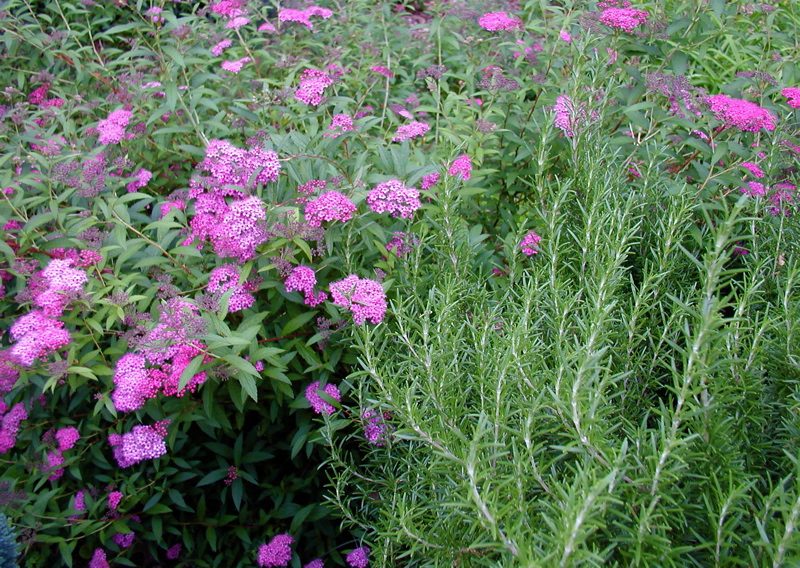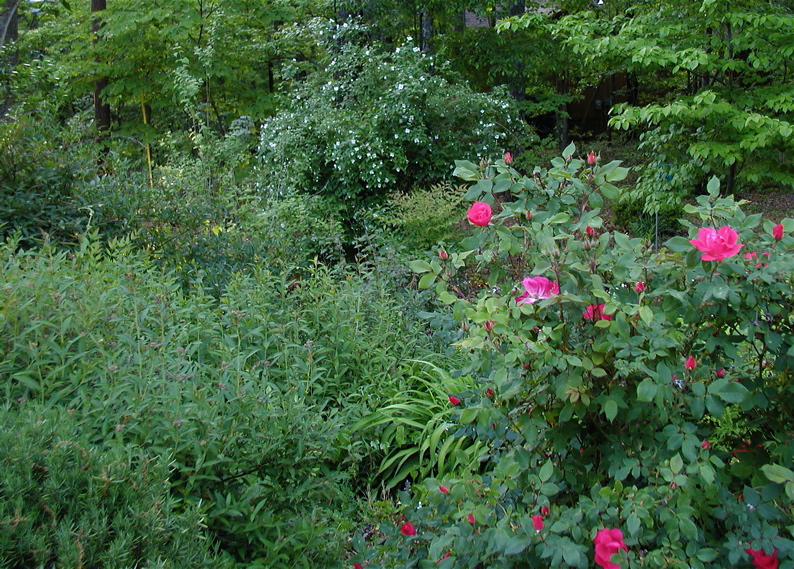A New Woodland Path
 Sunday, August 22, 2010 at 5:20PM
Sunday, August 22, 2010 at 5:20PM This past spring I noticed some trilliums growing in an area of the woodland garden that was undeveloped: Trillium cuneatum, photo taken March, 2010There was a bit of a trail there, created by dogs and kids who sometimes cut through the woods. I cleared a few vines from the area but didn't do much else until last week. A cool breeze hit me as I stood in the forest, and in the hot, sticky air of August the momentary refreshment brought inspiration.
Trillium cuneatum, photo taken March, 2010There was a bit of a trail there, created by dogs and kids who sometimes cut through the woods. I cleared a few vines from the area but didn't do much else until last week. A cool breeze hit me as I stood in the forest, and in the hot, sticky air of August the momentary refreshment brought inspiration.
I would make a new woodland path!
I went to work pulling weeds and more vines till the foot trail was wider and better defined. The new path comes off the moss path in the woodland garden and makes a wide loop before it rejoins the main path in the upper woodlands. Straw falls from pine trees beside the new path and provides a nice carpet underfoot. I planted a few hostas, heuchera, ferns and a climbing hydrangea, but I think I will leave the area essentially wild. As in most of my garden, low maintenance will be important. Nandina and mahonia already grow here, and there is vinca, liriope, and the trilliums, which are dormant this time of year. I must plant some daffodils, of course, and this will be a great place for some Snowflake hydrangeas and some native azaleas and...we will see!
I was dripping sweat and dirty as an oil rig worker when I finished, but I was pleased with the results. I still need to cut some brush and wild hedges, but further work will wait till cooler weather! Meanwhile, here is what I have so far: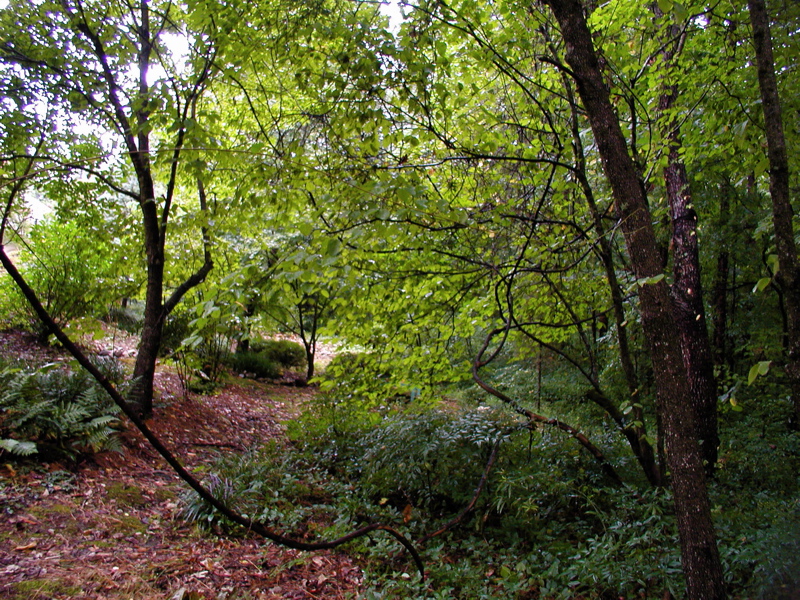 View of wild muscadine vines, to the left of the new path as it comes off the main woodland trail
View of wild muscadine vines, to the left of the new path as it comes off the main woodland trail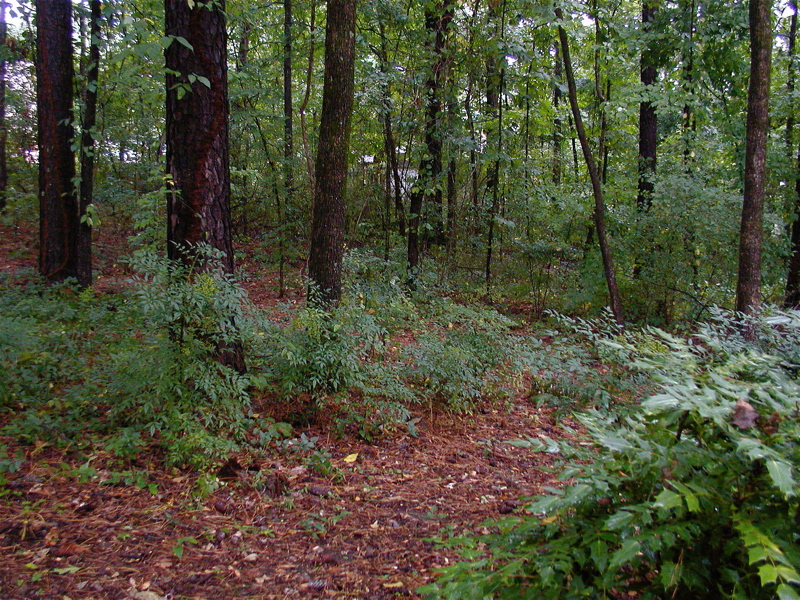 Nandina on the left and mahonia on the right at the head of the new woodland path
Nandina on the left and mahonia on the right at the head of the new woodland path
 View of nandina near the beginning of the new path
View of nandina near the beginning of the new path
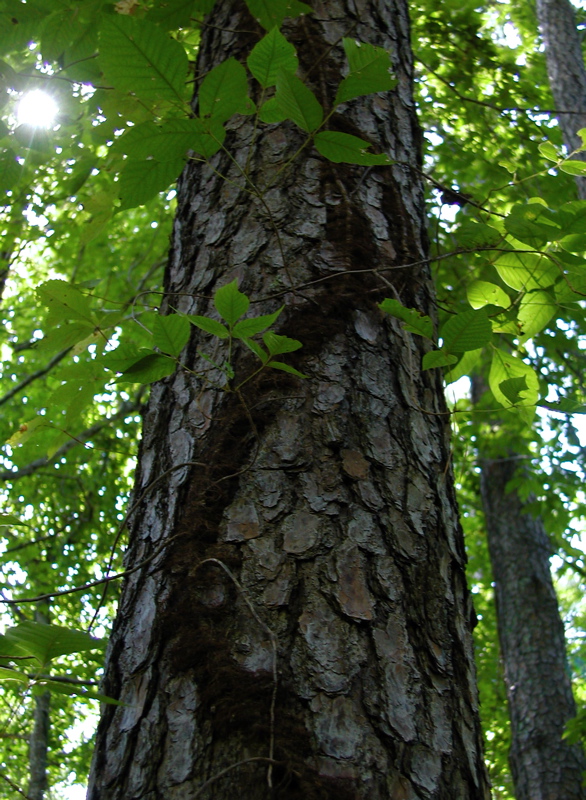 An enormous poison ivy vine grows on this pine tree. I decided not to touch it.
An enormous poison ivy vine grows on this pine tree. I decided not to touch it. I planted a few hosta and heuchera along this part of the path.
I planted a few hosta and heuchera along this part of the path.1st row: hosta 'Groundmaster', foliage and flower. 2nd row Mahonia; Native climbing hydrangea, Decumaria barbara. 3rd row:Liriope; Nandina domestica. 4th row: Heuchera 'Autumn Bride"; Hosta 'June'.
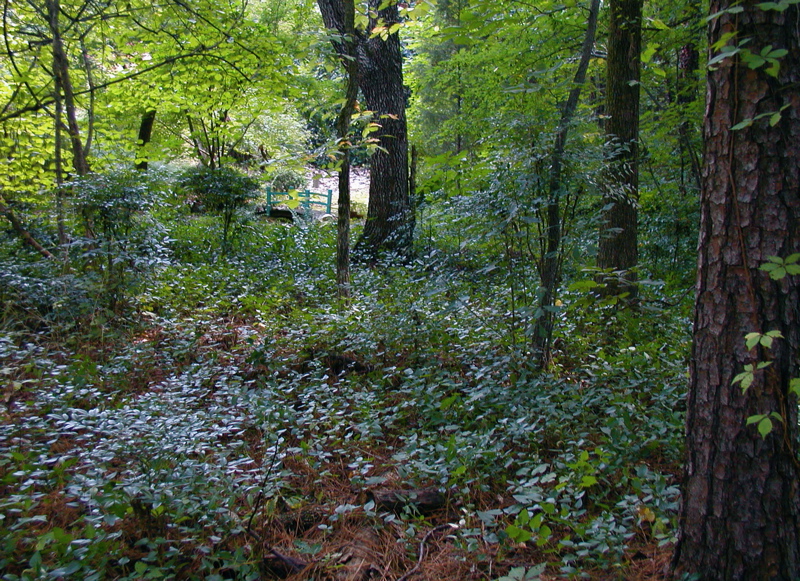 The woodland floor is covered with vica major here beside the new path. I plan to plant daffodils in this area.
The woodland floor is covered with vica major here beside the new path. I plan to plant daffodils in this area. Here the new trail starts to turn back toward the main woodland path.
Here the new trail starts to turn back toward the main woodland path. This is the view to the left, near the end of the new woodland path.
This is the view to the left, near the end of the new woodland path.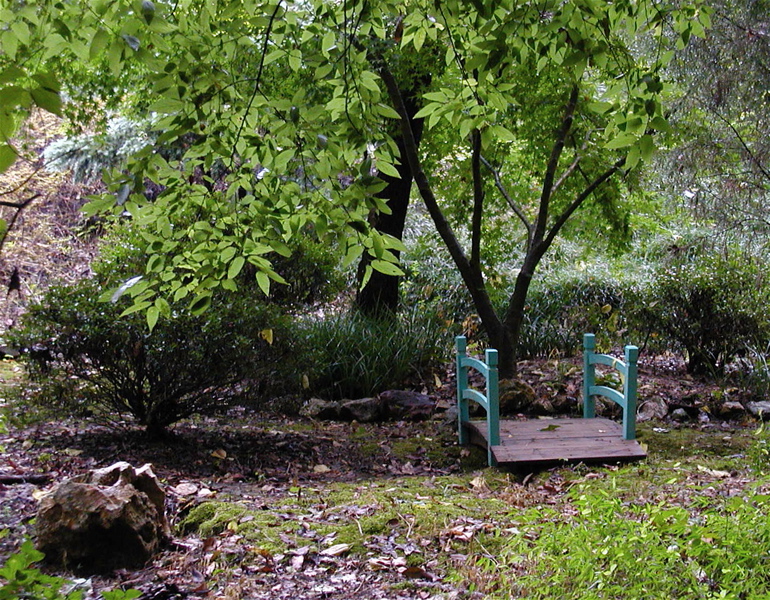 The new path rejoins the main trail at the blue bridge.
The new path rejoins the main trail at the blue bridge.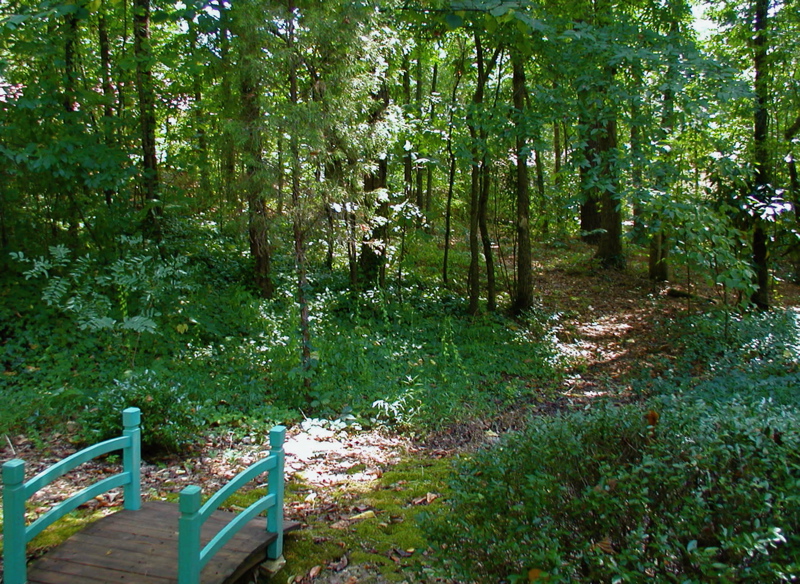 View from blue bridge, back toward new path
View from blue bridge, back toward new path
You may also like : Seven Steps to Making a Woodland Garden


